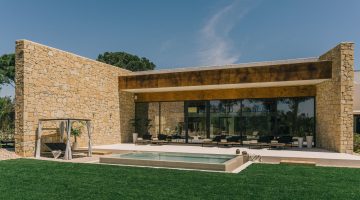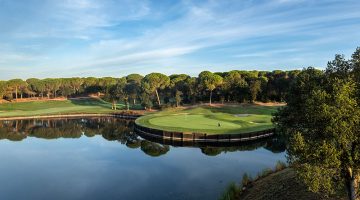 From lakes and oceans to mountains and volcanoes, experience Catalonia’s scenic landscapes from behind the wheel.
From lakes and oceans to mountains and volcanoes, experience Catalonia’s scenic landscapes from behind the wheel.
Cap de Creus Route
Regularly voted as one of the top driving destinations in Europe, the Cap de Creus is the most Easterly point of the Iberian Peninsula. Pounded by endless waves and the Tramuntana wind, this desolately beautiful landscape is a Natural Park featuring unique flora and fauna.
 From Camiral, take the A7 North to exit 4, then follow the C260 through Vilajuiga and on towards Roses. Just before Roses, turn off on the GI-614 all the way across the Natural Park to Cadaques. Just before dropping down to the town, stop at the viewpoint and take in the azure coastline and the whitewashed houses of this former fishing village. You may wish to stop off here for a swim before taking the road from Port Lligat towards the Cap de Creus lighthouse.
From Camiral, take the A7 North to exit 4, then follow the C260 through Vilajuiga and on towards Roses. Just before Roses, turn off on the GI-614 all the way across the Natural Park to Cadaques. Just before dropping down to the town, stop at the viewpoint and take in the azure coastline and the whitewashed houses of this former fishing village. You may wish to stop off here for a swim before taking the road from Port Lligat towards the Cap de Creus lighthouse.
Drive through the spectacular landscape of this rocky headland before doubling back and heading off to Port de la Selva. The road twists and winds interminably past picture-perfect scenery towards this little town which serves excellent seafood at the Cala Herminda.
Continue from here up towards the Monestir Sant Pere de Rodes. Don’t be tempted to stop to look at the incredible panorama beneath you as the best views are from the monastery at the top. There are some scenic walks around the mountain top here and it is worth waiting to watch the sun setting over the bay before returning to Girona via Vilajuiga.
Lake and Volcano Route
From Camiral, take the motorway north towards Perpignan turning off on the C-66 to Banyoles. You will pass Catalonia’s largest natural lake, Lake Banyoles, an idyllic spot for swimming, boating or cycling along the 8km path that circumnavigates the water.
 Continue up to Serinya, famous for its prehistoric travertine caves, and then on up to the medieval village of Besalú. With an 11th Century Romanesque bridge presiding over winding streets and ancient buildings, this is surely one of the most beautiful villages in Catalonia and was declared a Historic National Monument in 1966.
Continue up to Serinya, famous for its prehistoric travertine caves, and then on up to the medieval village of Besalú. With an 11th Century Romanesque bridge presiding over winding streets and ancient buildings, this is surely one of the most beautiful villages in Catalonia and was declared a Historic National Monument in 1966.
 From Besalu, follow the A-26 motorway to Olot and The Garrotxa Volcanic Natural Park. You will pass the pretty village of Castellfollit de la Roca, where houses appear to cling to the mountainside, before arriving in Olot, home to the Montsacopa volcano crater. Olot is definitely worth a visit before you continue on taking the GI-524 out of the town to Santa Pau. This road passes numerous volcanic craters, including the spectacular 2km Santa Margarida crater which features a small Romanesque church at its centre.
From Besalu, follow the A-26 motorway to Olot and The Garrotxa Volcanic Natural Park. You will pass the pretty village of Castellfollit de la Roca, where houses appear to cling to the mountainside, before arriving in Olot, home to the Montsacopa volcano crater. Olot is definitely worth a visit before you continue on taking the GI-524 out of the town to Santa Pau. This road passes numerous volcanic craters, including the spectacular 2km Santa Margarida crater which features a small Romanesque church at its centre.
 Driving enthusiasts may wish to venture further on from here towards the Pyrenees as some spectacular roads await with challenging bends and incredible mountain vistas. The N-152 from Ripoli to Ribes de Freser is famous for its driving potential, full of bends and stunning mountain views. Or choose the C-38 towards Camprodon which is slightly closer. Return to Girona via Olot on the A-26 and C-66.
Driving enthusiasts may wish to venture further on from here towards the Pyrenees as some spectacular roads await with challenging bends and incredible mountain vistas. The N-152 from Ripoli to Ribes de Freser is famous for its driving potential, full of bends and stunning mountain views. Or choose the C-38 towards Camprodon which is slightly closer. Return to Girona via Olot on the A-26 and C-66.
Forest and Mountain Route
A favourite acscent for mountain bikers, this winding road takes you from Girona to Madremanya via the spectacular views of the Els Angels shrine. Take the A2 North from Camiral and turn off on the GIV-6703 towards Madremanya.
The road twists and turns around some hair-raising bends up to the small chapel of El Angels where Dali and Gala were married in secret in 1958. From here, at 485m, there are some spectacular 360 degree views of the Costa Brava landscape with the Pyrenees in the distance. The terraces surrounding this hilltop convent are a perfect spot for a picnic.
 It is worth following the road on towards the honey-coloured walled town of Madremanya, stopping for lunch if you can at the excellent restaurant, La Placa. Continue on to Cruilles, famous for its Romanesque monastery of Sant Miguel de Cruilles and, if you are feeling very ambitious, you can take another beautiful mountain road back from Cruilles towards Cassa de la Selva. Otherwise, a quicker route home passes through Sant Marti Vell onto the C-66.
It is worth following the road on towards the honey-coloured walled town of Madremanya, stopping for lunch if you can at the excellent restaurant, La Placa. Continue on to Cruilles, famous for its Romanesque monastery of Sant Miguel de Cruilles and, if you are feeling very ambitious, you can take another beautiful mountain road back from Cruilles towards Cassa de la Selva. Otherwise, a quicker route home passes through Sant Marti Vell onto the C-66.
Coastal Route
From Camiral, take the A7 North to the junction with the C-66. Follow this road to La Bisbal d’Emporda, a large town famous for its ceramics with a museum and numerous pottery shops. Continue along the C-66 for 6km until you reach the junction for Pals. This beautiful medieval city comes to life on Tuesdays with an open market and the old quarter is a must-see sight of Catalonia.
 From here, follow signs to Begur where you can then descend the winding cliff road to the tiny fishing village of Aiguafreda. If you return via Begur, there is an attractive clifftop road that runs all the way to Tamariu, passing a number of small coves and beaches. The Parador in Aiguablava has a sunny south facing resort built into the cliffs and Tamariu itself is well worth a stop for its peaceful horseshoe-shaped cove and pretty whitewashed houses.
From here, follow signs to Begur where you can then descend the winding cliff road to the tiny fishing village of Aiguafreda. If you return via Begur, there is an attractive clifftop road that runs all the way to Tamariu, passing a number of small coves and beaches. The Parador in Aiguablava has a sunny south facing resort built into the cliffs and Tamariu itself is well worth a stop for its peaceful horseshoe-shaped cove and pretty whitewashed houses.
 Continue on to the highest spot on this point of the Costa Brava: the San Sebastiá lighthouse at Calellá de Palafruguel. It was built as a watch tower in the XV century and is now a 4-star hotel serving afternoon tea. To return home, follow the C-66 to Girona.
Continue on to the highest spot on this point of the Costa Brava: the San Sebastiá lighthouse at Calellá de Palafruguel. It was built as a watch tower in the XV century and is now a 4-star hotel serving afternoon tea. To return home, follow the C-66 to Girona.








